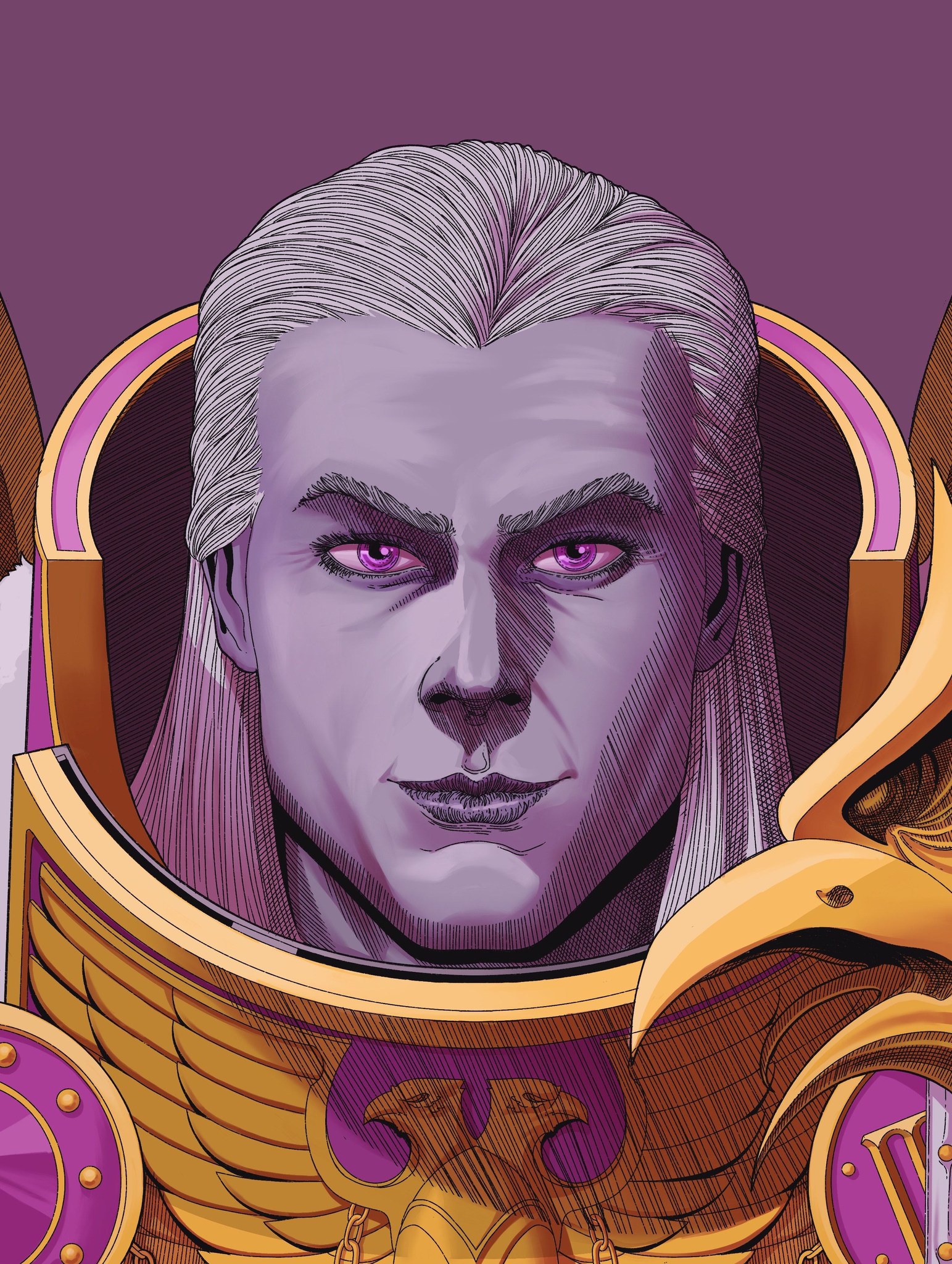The Artwork’s Elegance and Detail
This stunning portrait of Fulgrim captures his pre-Heresy splendor with an almost ethereal quality. His smooth, pale violet skin and long, silver-white hair create an otherworldly beauty, emphasizing his perfection and poise. The artist has rendered his facial features with a regal sharpness—high cheekbones, a refined jawline, and piercing violet eyes that seem to glow with an inner fire. His expression is both confident and enigmatic, reflecting his pride and unshakable belief in his own superiority. The ornate golden armor, decorated with intricate winged emblems and rich purple inlays, reinforces his status as the primarch of the Emperor’s Children, a legion obsessed with excellence and aesthetic mastery.
Symbolism and the Rise of Excess
Every detail in this piece exudes grandeur and excess, fitting for the primarch who sought perfection above all else. The gold and purple of his armor symbolize both nobility and ambition—qualities that made Fulgrim a celebrated leader but also sowed the seeds of his downfall. His slight smirk hints at the arrogance that would later define him, a foreshadowing of the corruption that awaited. The avian motifs on his shoulder plate, particularly the golden eagle, suggest both imperial glory and the soaring heights of artistic and martial perfection that Fulgrim once embodied. Yet there is an unsettling quality in his gaze, as if his pursuit of beauty is already leading him toward something far darker.
Who is Fulgrim?
Fulgrim, primarch of the Emperor’s Children, was one of the Emperor’s most gifted sons—both a warrior and an artist, a master of swordplay and aesthetics alike. He believed that perfection was not just a goal but a duty, leading his legion to become one of the most disciplined and elite forces in the Imperium. However, this obsession with perfection made him susceptible to the whispers of Chaos, particularly the temptations of Slaanesh, the Prince of Excess. Over time, Fulgrim’s quest for mastery became twisted into hedonistic indulgence, leading him to betray the Emperor during the Horus Heresy. Eventually, he transcended his mortal form, becoming a daemon prince of Slaanesh, forever embodying the excess and corruption he once sought to avoid. This portrait captures a moment before his fall—a beautiful yet tragic reminder of what he once was.

